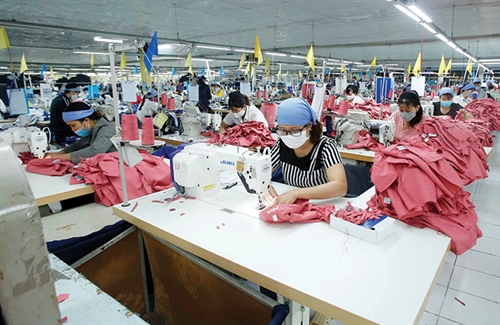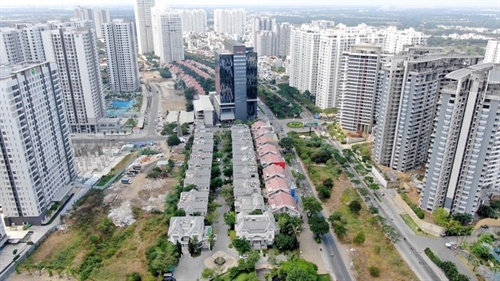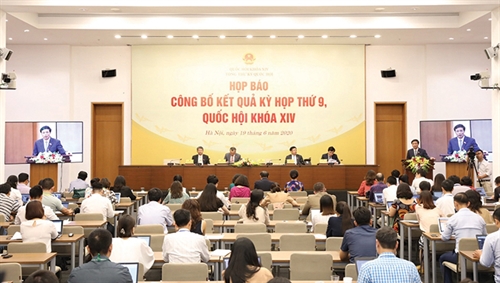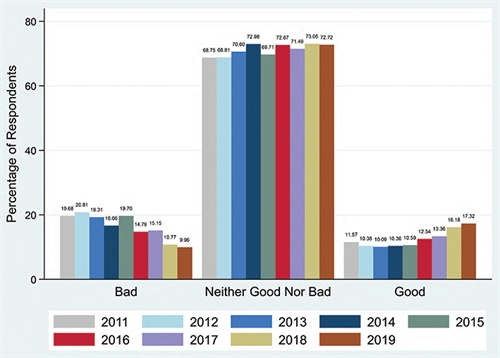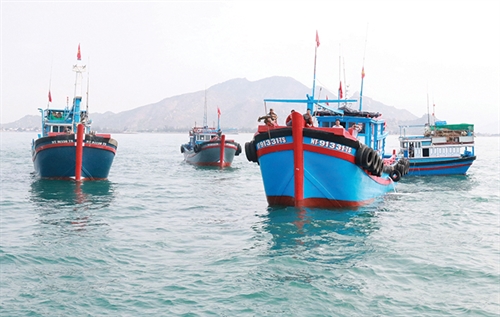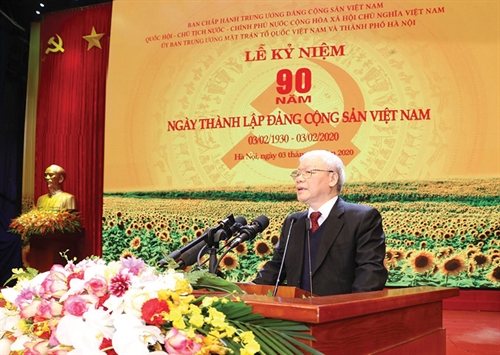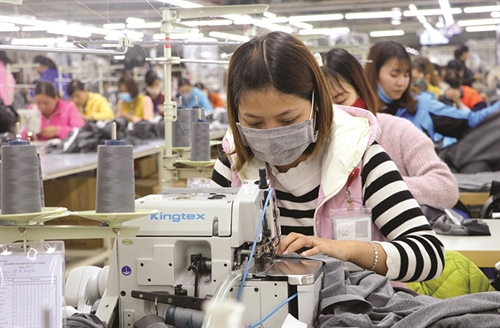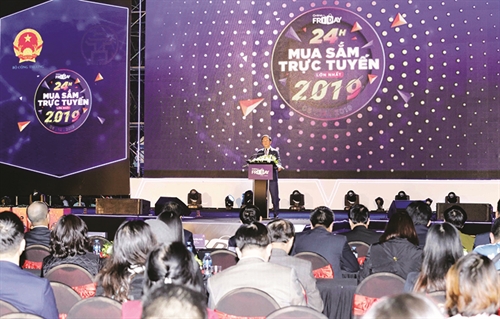This September marks 75 years since the Vietnamese people, under the leadership of the Communist Party of Vietnam (CPV), overthrew 80 years of French colonial rule.
President Ho Chi Minh on September 2, 1945, declared independence for the Democratic Republic of Vietnam and the country then recorded significant victories in its resistance wars against the French and the Americans as well as in its cause of doi moi (economic reform).
Tremendous achievements have been posted in a range of endeavors over the last 75 years.
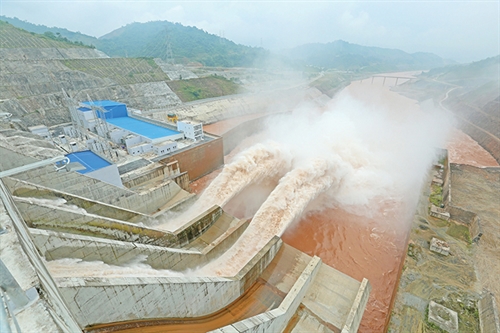 |
| Lai Chau hydropower plant__Photo: Huy Hung/VNA |
Political system
On January 6, 1946, the first election for the country’s National Assembly (NA) was held. In combat zones throughout then-South Vietnam, elections took place amid fierce circumstances and even bloodshed as every Vietnamese citizen exercised their democratic right to vote.
Following the success of the election, the NA, at its first session on March 2, 1946, elected its Standing Committee. The Democratic Republic of Vietnam was officially established, with the NA as the highest state power and the Government, elected by the NA, as the highest administrative body.
That was the State of the nation, by the nation, for the nation, which had full legal capacity to carry out key national tasks - the resistance wars and the construction and defense of national independence and freedom.
For the last 90 years, the CPV has been at the vanguard of the struggle for national independence, liberating the country from almost a century of domination by Western colonialists and leading the people to full victory in the 30-year resistance war against powerful aggressors. Since the country’s reunification, the Party has led the Vietnamese people in carrying out renewal, modernization, and industrialization.
The CPV takes Marxism-Leninism and Ho Chi Minh Thoughts as its firm ideological foundation, guiding its activities, promoting its traditions, and absorbing the essential ideas of other nations. By grasping objective laws, epochal trends, and the country’s reality, the Party developed sound political programs and revolutionary policies that meet the aspirations of the people.
Important changes were also made to the functions of state administrative bodies, including the Government, ministries, and People’s Committees at all levels, in line with the transition to a socialist-oriented market economy.
The government apparatus has been restructured on the principle of organizing multi-branch and multi-domain ministries through various stages suitable with managerial capabilities, personnel qualifications, and facilities and conditions, so as to ensure continuity, stability, development, and compatibility with reality.
The Government also improved its method of operation by conducting unified macro-management over political, economic, cultural, social, defense, security, and foreign affairs tasks nationwide through a synchronous system of laws, policies, plans, and other macro-management instruments.
Economy
After the declaration of independence on September 2, 1945, the Provisional Revolutionary Government then held its first session. The primary task for the Democratic Republic of Vietnam was to eradicate starvation and illiteracy.
A war economy had been developed since 1951, the State Bank of Vietnam had been set up, and Vietnamese bank notes began circulating from June 10, 1951, marking an important point in the distribution of goods, trade, and commercial activities.
At that time, Vietnam was still a poor agricultural country, with 80 percent of its population and 70 percent of its workforce living in rural areas and subsisting on farming.
Production was still not enough to meet demand for food.
By 1984, socialist economic sectors and State-owned enterprises (SOEs) held the greatest proportion of total social production. A mechanism based on public property dominated all social production.
Meetings of the Political Bureau and of the 5th Party Central Committee from July to December of 1986 concentrated on compiling and approving a Political Report for submission to the 6th National Congress.
The congress placed special emphasis on improving and enhancing the effectiveness of external economy.
In building a new management system, a major reform of the state apparatus was carried out.
In the 1996-2000 period, GDP increased by an average of 6.94 percent each year. Agriculture posted an annual increase of 1 million tons of food, industry rose by an average of 13.5 percent, and GDP doubled compared to 1990.
Despite devastating natural disasters in 2000 and 2001, GDP still increased by 7 percent and 6.8 percent, respectively, and would continue to grow in the years to come.
Guidelines on development of a multi-sector economy had been carried out effectively. A socialist-oriented market economy had been formed and the macro economy stabilized. With a developing economy and social issues addressed, the lives of the majority of people had been improved.
To revitalize SOEs and enhance the effectiveness of their production and business activities, and to promote competitiveness and regional and international integration while maintaining the key role of SOEs in the national economy, the Government launched a three-year program on restructuring SOEs (2002-2005).
Economic competitiveness was taken to a higher level. Vietnam ranked 78/148 in the Global Competitiveness Index in 2013, and 61/141 in 2019.
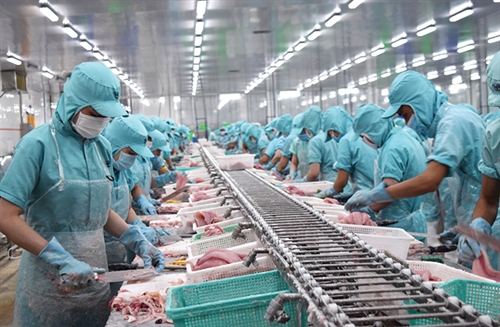 |
| Processing Tra catfish for export to the US market__Photo: VNA |
Social welfare
From 1945 to 1954, Vietnam’s first policies on labor rights, employment, and social welfare for war invalids and relatives of war martyrs were issued.
Since 1986, support policies for those who contributed to the country’s revolution and social welfare policies for groups of vulnerable people have been fully implemented.
The rate of social insurance is increasing. Unemployment in cities fell from 4.5 percent in 2010 to 3 percent in 2020. From 2001 to 2006, the country created more than 8 million jobs. The rate of trained workers increased from 40 percent in 2010 to 65 percent in 2020.
Health
Health outcomes have improved in tandem with rising living standards.
From 1993 to 2017, the infant mortality rate fell from 32.6 per 1,000 live births to 16.7. Between 1990 and 2016, life expectancy rose from 70.5 to 76.3 years - the highest in the region for countries with a similar income level. Vietnam’s universal health coverage index is at 73 - higher than the regional and global averages - with 87 percent of the population covered.
Since the country’s reunification on April 30, 1975, the health sector has made great strides forward and posted key achievements in the care and protection of people’s health.
Regarding the fulfillment of the Millennium Development Goals (MDGs), Vietnam has been able to eradicate polio and control neonatal tetanus, pertussis, and diphtheria. It has maintained an immunization rate of more than 95 percent for under-one children, pregnant women, and women of reproductive age. The rate of malnutrition among under-five children decreased from 30.1 percent in 2000 to 13 percent in 2018, while the rate of stunting malnutrition fell from 36.5 percent in 2000 to 23.3 percent in 2018.
Over the last 30 years of exerting epidemic prevention and control efforts, Vietnam has built up a capacity to monitor, detect, diagnose, and identify diseases and respond quickly and effectively. The country’s capacity to prevent dangerous and emerging diseases has improved, as has available treatment. Preparations for coping with dangerous diseases have also been put in place.
As a result, many dangerous epidemics have been controlled, repelled, and eradicated, such as smallpox in 1978, polio in 2000, and neonatal tetanus in 2005. Since 2002, no case of plague has been reported. Some epidemics could have been hundreds or thousands of times worse had it not been for the expanded vaccination program that began in 1981, such as diphtheria, whooping cough, and measles. Other circulating epidemics such as dengue fever, viral encephalitis, tuberculosis, typhoid, and cholera have also been controlled.
Vietnam was also one of the first countries to successfully control SARS, the A/H5N1 flu, and the A/H1N1 flu, while preventing a number of dangerous emerging epidemics such as the A/H7N9 flu, Ebola, and MERS-CoV.
It has also mastered and improved many world-class medical techniques and been transferred advanced techniques for diagnosis and treatment, such as laparoscopic surgery, cardiovascular intervention, and diagnostic imaging.
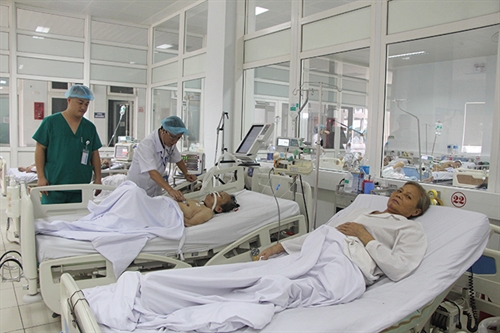 |
| Hospital overload has step by step been reduced thanks to the increase of patient beds by nearly 30,000 at central-, provincial-, and district-level hospitals__Photo: VNA |
Education
Illiteracy has been in decline since 1986 and about 2.5 million Vietnamese children are admitted to school each year. In 1986, there were 3 million children enrolled in childcare centers and kindergartens, close to 12 million students in general schools, and more than 300,000 learners in vocational and professional schools and colleges.
Vietnam’s accomplishments over the years have been truly remarkable in terms of attendance, completion, and student achievement.
Equality in access to education has seen a host of accomplishments. A network of boarding schools for ethnic minority students has been built, and the country now has 316 such boarding schools in 49 of its 63 provinces and cities.
The Government has been paying a great deal of attention to support policies for the education sector, in particular exemption from or reduction of tuition fees for poor students and a student loan program.
The quality of education has been boosted to a remarkable degree.
Over recent years, Vietnam has expanded enrolments while defining and enforcing minimum quality standards for school facilities. Teacher quality also matters, and the country has laid a solid foundation by professionalizing its teaching workforce and establishing standards around teacher knowledge, skills and disposition.
During 2016-19, Vietnam picked up 45 gold medals, 60 silver medals, 31 bronze medals, and six certificates at international and regional education Olympiads.
Its higher education sector ranked 68/196 in the world in 2019, while three Vietnamese universities were in the top 1,000 best globally in the same year.
Diplomacy
Over the last 75 years, the diplomatic sector has made great strides forward and contributed substantially to the struggle for national independence and reunification as well as the ongoing process of renewal, international integration, and national defense, thus helping elevate Vietnam’s standing in the international arena.
Vietnam has actively joined international economic organizations such as the Association of Southeast Asian Nations (ASEAN) in 1995, the Asia-Europe Meeting in 1996, the Asia-Pacific Economic Cooperation (APEC) in 1998, and the World Trade Organization (WTO) in 2007. It now plays an increasingly important role in ASEAN and its partners, and actively participated in the United Nations (UN) Security Council in 2014-16.
In addition to economic integration, integration in politics-diplomacy, defense-security, and culture-society has also been promoted strongly.
Vietnam has also participated in joint maritime exercises with the US for the first time, within the framework of ASEAN, signed a Framework Participation Agreement with the European Union that will facilitate its contribution to the EU’s Common Security and Defense Policy (CSDP)’s missions and operations, and ratified the Right to Organize and Collective Bargaining Convention (Convention No. 98) of the International Labor Organization (ILO).
The country sent a second Level-2 field hospital to the UN Peacekeeping Mission in South Sudan after the first successfully completed its mission.
The country’s achievements in multilateral relations over the years have boosted its growing international status.
In terms of bilateral relations, Vietnam has maintained stable and positive relations with all countries worldwide and now has 30 strategic partners and comprehensive partners.- VLLF/VNS
